Athlete Sustainability Guide -
WCH Tokyo 2025
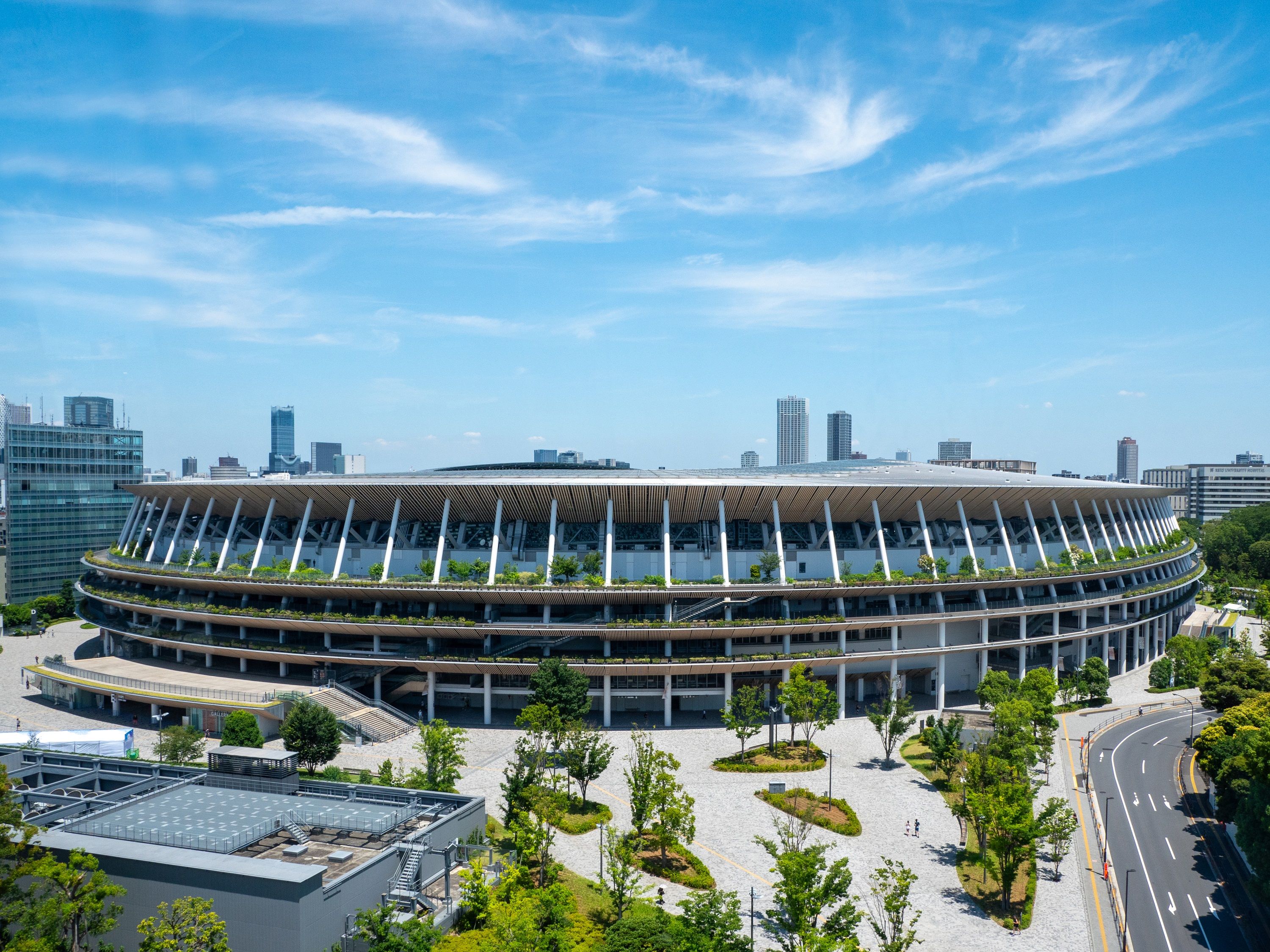
Ideas and solutions to help athletes tackle environmental challenges linked to the climate emergency
Last updated: 04 September 2025

Introduction
Our planet is in peril. Recent years have seen record-breaking heat waves, ravaging wildfires, devastating floods and on-going droughts across every continent that have claimed thousands of lives, misplaced hundreds of thousands more and caused hundreds of billions of dollars in damage. The scientific community is unanimous; these weather events have been made increasingly likely by the impacts of climate change, with human activity and our use of fossil fuels as the main driver.
We've seen the impacts in virtually every aspects of our day-to-day lives. And no, athletics, which relies on a clean and healthy environment, hasn't been spared.
Rising temperatures are impacting how and where we can exercise and train safely and when and where our events can take place. Extreme weather has damaged or destroyed venues. Poor air quality and smoke from wildfires has forced the cancellation of hundreds of events. From youth and community events to collegiate competitions and mass participation races, millions of athletes have already confronted some climate disruptions, and these will only magnify with time.
So, what steps can athletes like you take to help put us on the right track?
We hope to begin answering that question with this guide, a collection of ideas and tips that help you live a more planet-friendly lifestyle and, in turn, influence your colleagues and communities to do the same. We all know that small steps can lead to big changes in performance – that holds true off the track as well.
At World Athletics, we are committed to being part of the solution. At an increasing number of athletics events, you'll notice several initiatives that we, together with event organisers and local organising committees, are putting in place that will help reduce our events' impact on the environment, while improving its social impact. You can learn more about those in the guide and in the sustainability section of the World Athletics website, too.
Contents:
Sustainability at World Athletics
Athletes and the environment: 2022 survey results
Embedding Sustainability into athletics events
The United Nations Sport for Climate Action Framework

As athletes, we know that our performance on the track and field depends on a healthy environment. When the circumstances aren’t right, it’s evident in our game. Understanding the role of other living beings in shaping our environment can be a powerful motivator for us to take action and preserve it.
The statistics are alarming. Humanity is using the equivalent of 1.6 Earths to maintain our current way of life, altering 75% of the world’s land, 66% of oceans and one million of the world’s estimated eight million plant and animal species in the process. This damage is a collective responsibility and we must all work together to reverse it.
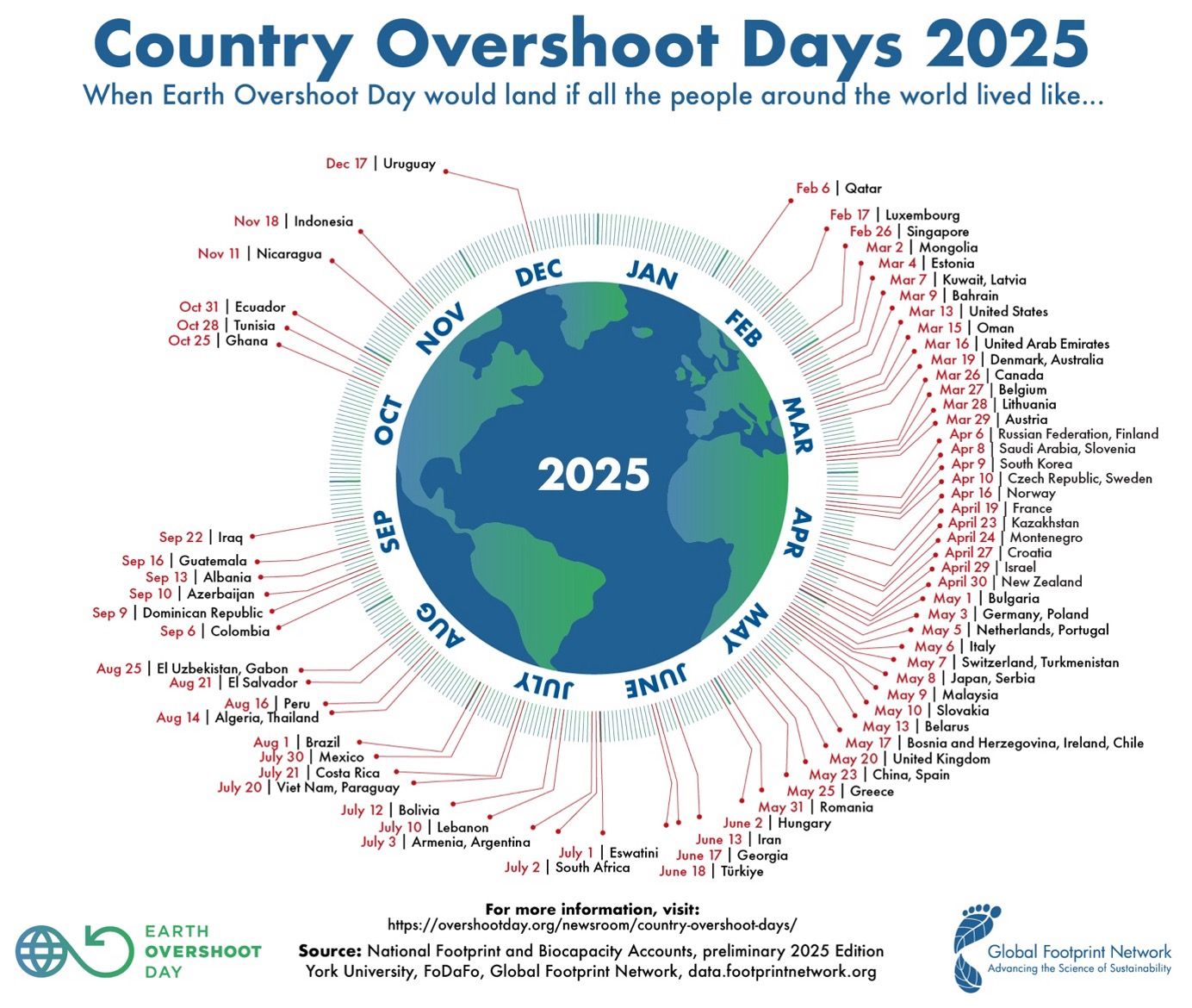
Every year, a Country Overshoot Day marks the date when the planet’s annual biocapacity budget (the capacity of ecosystems to regenerate what people demand) would be used up if everyone on Earth lived at the same level of consumption as the residents of that particular country.
Whether we are training or performing, being mindful of our surroundings is vital. Cleaning up after ourselves and disposing of litter responsibly is essential to protect the surrounding ecosystem. A simple action like choosing a reusable water bottle can go a long way in preventing plastic pollution in rivers and oceans.
At home, consider growing plants and flowers that support pollinating insects, but don't use pesticides or harmful chemicals that can contaminate soil and water and end up affecting the crops we eat and the environment as a whole.
Joining a conservation organisation in our local neighbourhoods not only improves the natural environment where we live but complements our active lifestyles as athletes while spending time outdoors. We may also meet like-minded people —including fellow athletes—who are also passionate about preserving the environment.
Being mindful of our impact on the environment and taking conscious actions to protect it, we can be champions not only in sports but also in environmental stewardship. Together, let’s strive to create a sustainable and thriving planet for all living beings, including ourselves, to thrive and succeed.
“Look in your community whether it’s at a school or in your sporting club,” encourages Australian race walker Rhydian Cowley. “Those are places where I started looking around to be involved in trying to make my part of the world better.”
“One of the biggest mistakes is not to do anything because we think that we can only do so much,” says Maria Pia Fernandez, Uruguayan 1500m national record holder. “But like in sports, every little effort matters. Protecting the vitality, the diversity and the beauty of our nature has to be an objective for all of the athletics community.”
Together, let’s be mindful of our impact on the environment and take conscious actions to protect it, striving to create a sustainable and thriving planet for all living beings.


We need to be aware that air pollution affects nearly everyone globally. Shockingly, 99% of the world’s population breathes polluted air, surpassing the World Health Organization’s limits. Outdoor air pollution contributes to over four million deaths annually. Given our increased time spent outdoors and heightened air intake during training, athletes may be disproportionately affected.
We can take proactive steps to minimise the impact of air pollution on our health and performance. Monitoring local air quality by using weather apps and websites helps us make informed decisions about outdoor activities. Choosing training venues away from busy traffic and industrial zones reduces exposure to harmful pollutants.
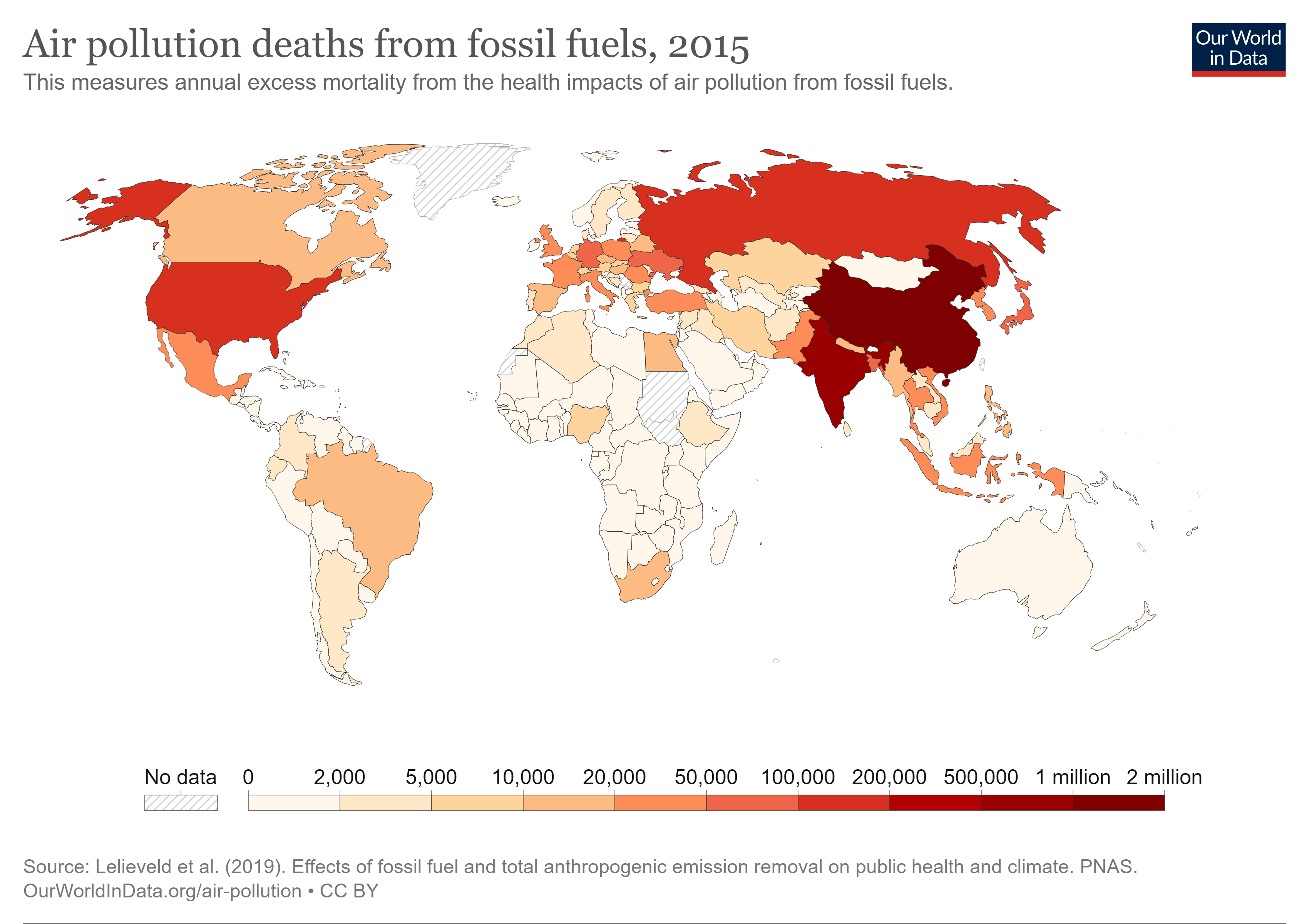
On days with poor air quality, modifying training intensity and considering indoor alternatives can protect our wellbeing. Adequate hydration and recovery practices also support our bodies in coping with pollution-related stress.
Beyond individual measures, athletes have the power to influence change. By advocating for cleaner air and supporting environmental initiatives like World Athletics’ Every Breath Counts campaign, we can contribute to reducing air pollution on a broader scale. Our collective efforts can raise awareness and inspire positive action towards cleaner air for everyone’s wellbeing.
“As athletes, with our training and competitions, we take in 10 times as much air when we run than when doing something else and so air pollution poses a threat to our health,” says Paula Radcliffe, the former British long-distance runner. “Until the next generation of athletes can run in clean air, I commit to help lead the fight against air pollution.”
World Athletics’ Air Quality project and Running for Clean Air initiative are both dedicated to combating air pollution in urban areas. While the Air Quality project raises awareness about air pollution and its impacts on both elite and recreational runners around the world, Running for Clean Air measures air quality at city marathons and shares the data as part of a larger awareness campaign. With more than a million participants globally each year, marathons serve as a unique opportunity to leverage existing running communities, spark positive transformations within cities and increase awareness of air quality issues.


About a third of all human-caused greenhouse gas emissions are linked to food, primarily those that are animal-based like meat and dairy. Compared to 2006, people around the world are on track to consume 70% more calories, almost 80% more animal-based foods and 95% more beef by 2050.
As athletes, protein derived from animal products often plays a significant role in our diets but research shows that we tend to consume higher protein content than recommended, with 70% of it coming from animal sources.
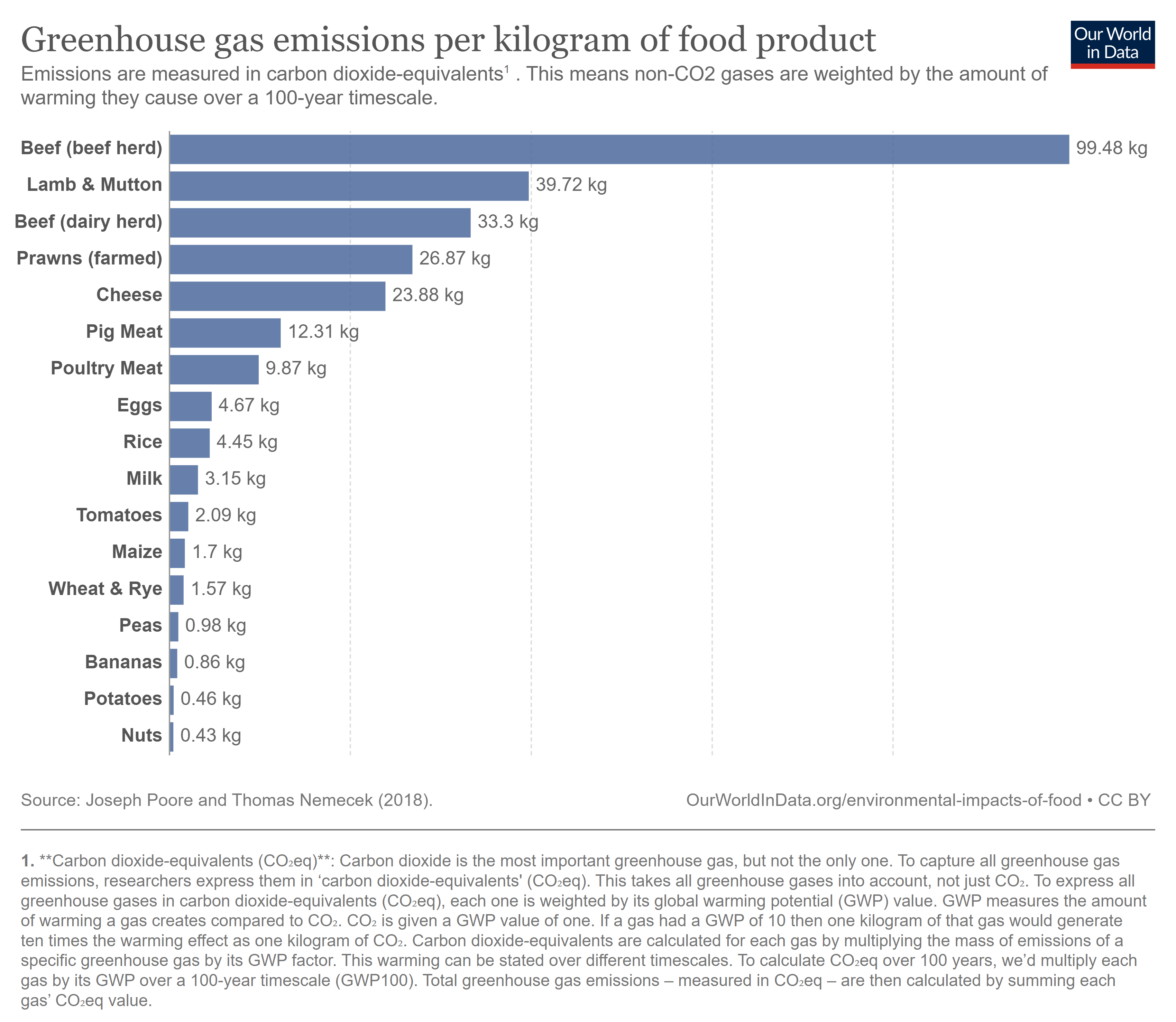
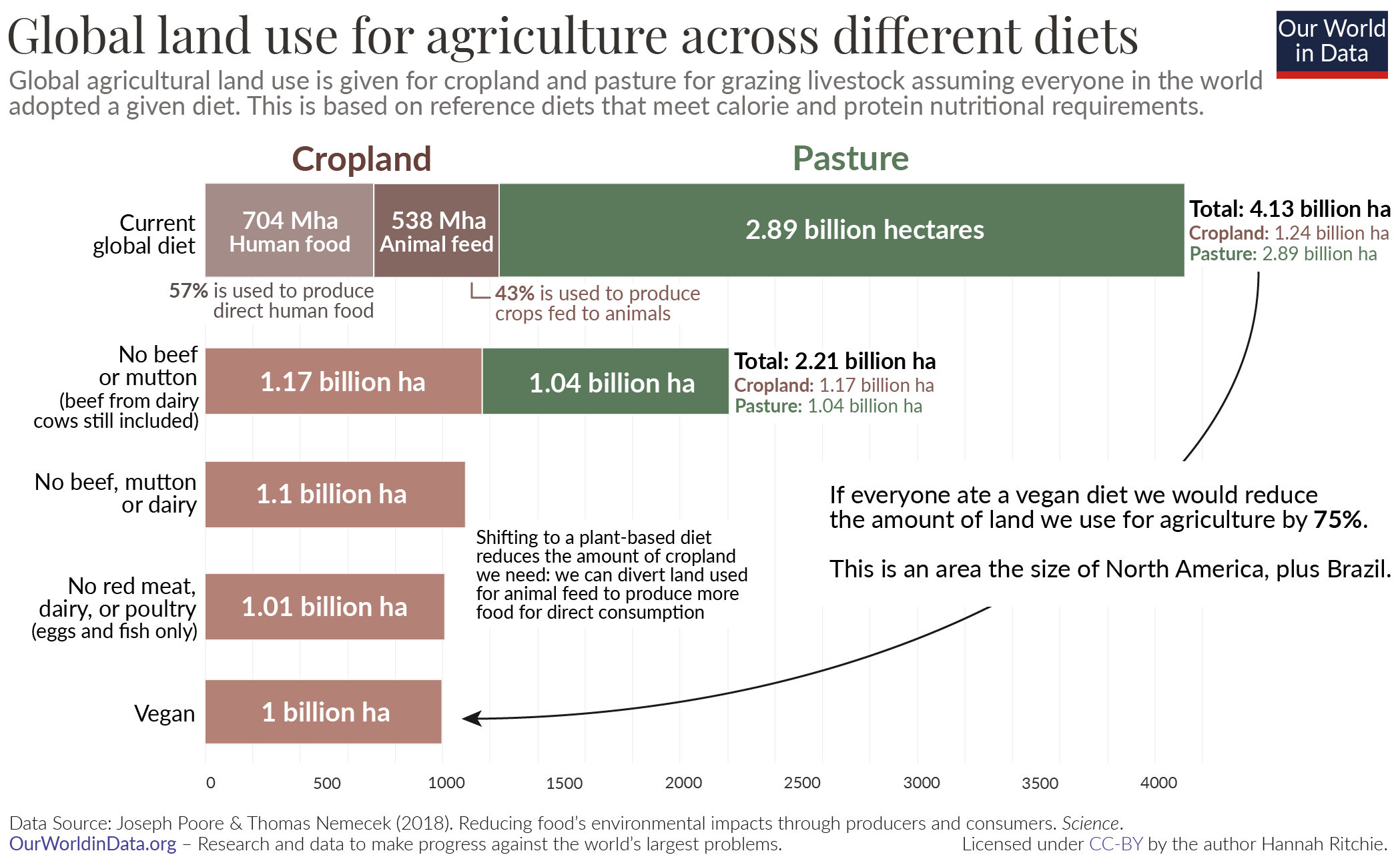
A balanced diet is crucial for our athletic endeavours but it’s essential to be aware of unintentional harm to animal species. For example, almost 90% of the world’s marine fish stocks have been depleted. By choosing sustainably sourced seafood, we can reduce demand on the fish industry and improve ocean health.
Consuming more plant protein (such as beans, chickpeas, lentils, nuts and grains), less animal-based foods (meat and dairy) and less saturated fats (butter, milk, cheese, meat, coconut oil and palm oil) can all also lead to a significant reduction in greenhouse gas emissions.
While we should consider the entire food production cycle, choosing what you eat has more of an impact than how far that food has travelled or how much packaging it has, which usually accounting for only a small fraction of foods’ greenhouse gas emissions. Reducing food waste is also key; if food waste were a country, it would be the third-largest emitting country in the world.
Understanding food systems s not just important athletes, but the team of people and sporting institutes around us too.
Being well-versed in the impact of food choices on our planet, we can take proactive steps to reduce our carbon footprint and contribute to a more sustainable future.
“Athletics is a big community. And as a community we have a duty to one another to help educate and take action on matters of environmental, social and economic sustainability,” says Kelsey-Lee Barber, Australia's two-time javelin world champion. “As an athlete, my goal in sport is not only about my personal success. A big part of my why is to encourage others, be a role model, and to lead by example.”


Whether at home, athletics arenas or training facilities, our modern lives rely on energy consumption.
Although renewable energy sources like solar, wind, hydropower and biofuels are on the rise, non-renewable sources still dominate the global energy mix.
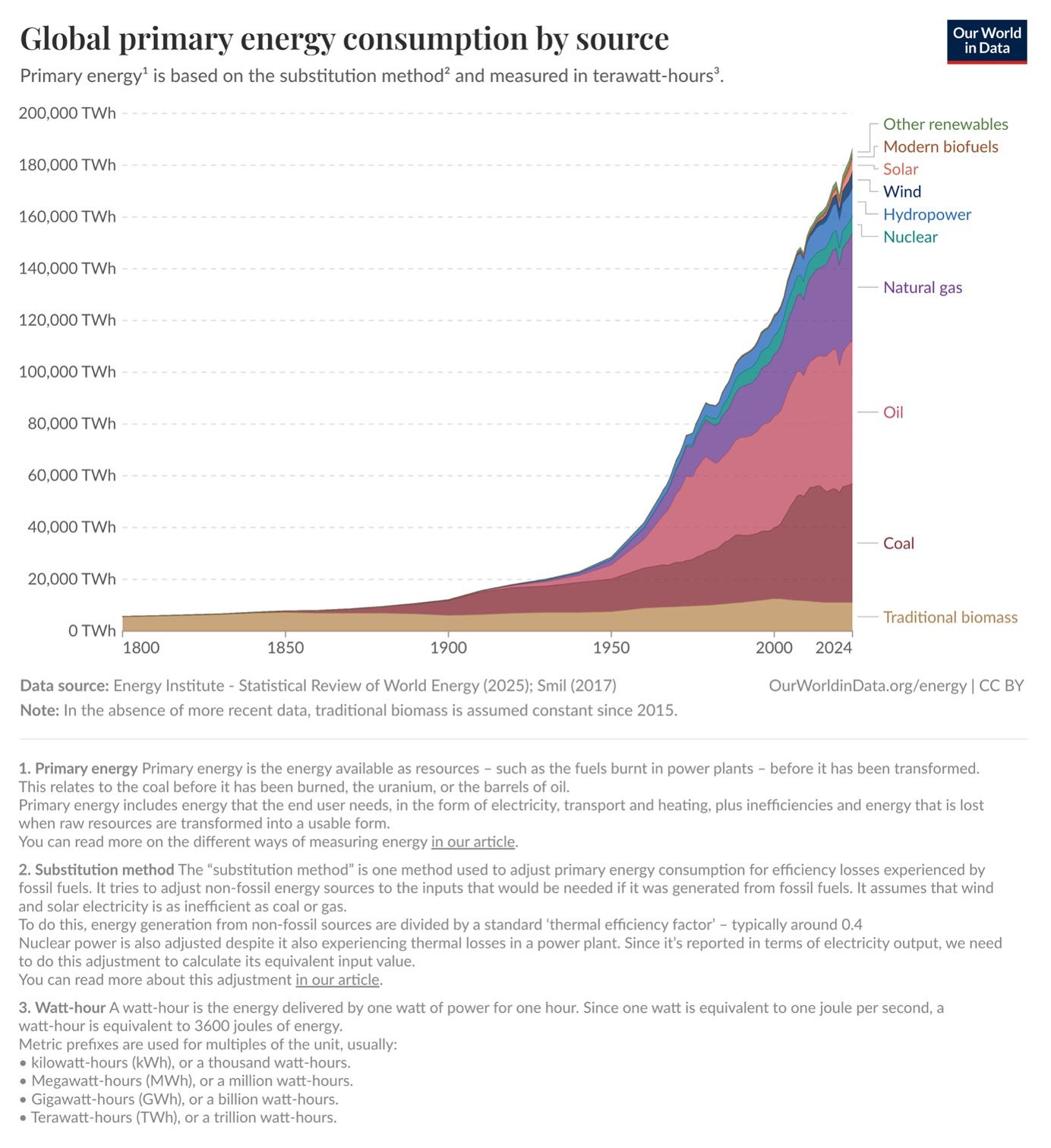
There are, however, numerous simple and small steps we can take to reduce our energy consumption.
Turning off lights, appliances and unplugging chargers when we’re not using them only takes a moment but can lead to significant energy savings.
Even after a demanding athletic performance, opting for a shower instead of a bath and limiting showers to under five minutes can save a significant amount of water and energy. This helps preserve water levels in the ecosystems around us, supporting plants and wildlife.
When washing our sports gear, waiting until we have a full load and using cold water maximises water usage efficiency, saves costs and reduces energy consumption. Whenever possible, air-drying laundry on a warm, sunny day is not only eco-friendly but also better for the longevity of our gear.
Athletes living in hot climates can use plants and vegetation for cooling and shade, as well as electric fans instead of air conditioning, to minimise energy usage. On the other hand, those in colder regions can stay warm by layering on clothing rather than cranking up the heating.
Consider installing a smart metre and thermostat to remotely monitor and control energy use. Even lowering the thermostat by a degree or two can make a meaningful difference in energy savings and costs.
“Sport can have a positive impact on climate change, whether that’s using our voice to communicate to fans or encouraging organisations to step up and transition to clean energy, or being proactive about sponsorships or net-zero plans,” says Sam Mattis, 2024 Olympic discus finalist from the USA. “If you do one small thing, is it going to fix climate change? No, but that can ripple out and inspire other people to do good,” he says. “Thinking about those ripple effects keeps me going.”


Being mindful consumers when it comes to our sports equipment and everyday purchases is crucial as our choices can make an impact on the environment and society.
Polyester, used in much of our performance sportswear, has a higher carbon footprint due to its reliance on fossil fuels to be produced. Thankfully, more environmentally friendly sportswear options like organic cotton, bamboo and hemp that maintain performance are becoming increasingly available.
We can also stay informed about sustainable technologies and materials. Engage in research, read product reviews and connect with like-minded athletes to share knowledge and experiences. Look for reputable eco-labels and certifications like Fairtrade, signalling products with more sustainable practices, and be open to innovations and new ideas that promote sustainability.
Durability is a critical aspect of responsible consumerism for athletes. By investing in gear that can withstand the demands of rigorous training and competitions, we minimise the need for frequent replacements. Being a smart consumer is about opting for equipment that goes the distance while enabling us to focus on our performance.
By taking these steps, we can become influential advocates for environmental responsibility with the brands we work with and the people around us in our everyday lives.
“I pay special attention to the quality of the products I buy, whether it’s food, clothing, items in general,” says Elena Vallortigara, Italian high jump 2022 world bronze medallist. “I try to be as essential as possible: when I really need something, according to my financial means, I choose the option with the best quality price ratio. But quality, as synonymous of sustainability, is always a priority. We should all have the interest and curiosity to know more about what we buy: being better informed can leading to more respectful choices. There are so many ways to reuse food and clothes; the internet is full of delicious recipes and clothes can find a new life with other purposes and people.”


Globally, we generate over two billion tonnes of waste each year which could increase to a staggering 3.8 billion tonnes by 2050.
Waste starts with what we consume – what we buy or don’t buy. It’s crucial to be mindful of our choices and follow the four Rs: Refuse, Reduce, Reuse and Recycle.
Refuse means saying ‘no’ to things we don’t need, like single-use plastic bottles. Instead, opt for reusable bottles to hydrate and reduce plastic waste. We can engage with our clubs, governing bodies and event organisers to promote sustainable practices, too.
Reducing involves purchasing less and considering alternatives. Before buying something new, we should ask ourselves if it’s truly necessary. Reusing means taking care of our existing items and using them for as long as possible. Do we really need new equipment for every event, or can we reuse items to save resources?
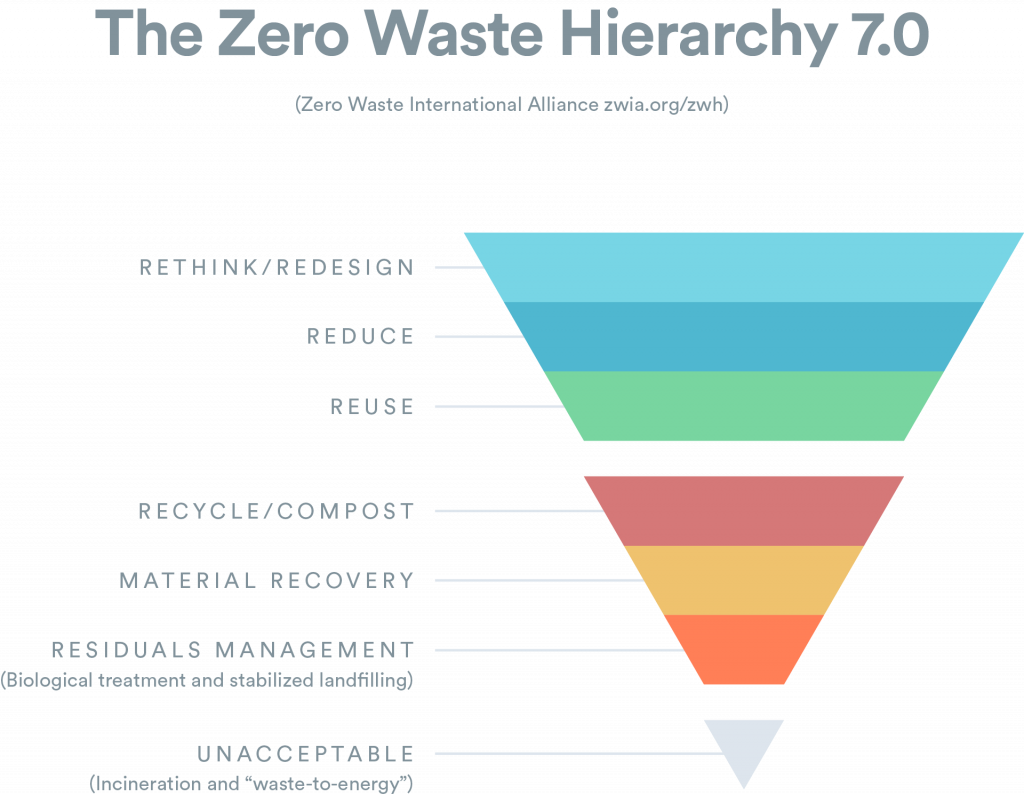
If we must buy something that won’t last forever, let’s find a new life for it somewhere else, keeping it in the system and out of landfill.
“I’m trying to do as much as I can back at home in Switzerland,” says 2021 European indoor 60m champion Ajla Del Ponte. “As sponsored athletes we get clothing packages very often and it happens that some things will never be used. I make sure to donate to associations or I ask to my club if there are some kids in need. I’d like kids or young adults to not have to think about this by giving a bit of mine. A small gesture can change a lot. In Switzerland we also have an initiative called ‘The magic table’ which helps people in need to avoid alimentary poverty. I always try to donate either coffee, rice, pasta or anything they need at the moment. Again, a small gesture for us, but a big impact for someone else.”
Let’s be responsible consumers and make conscious choices to combat waste. By following the four Rs, we can reduce our environmental impact and champion sustainability both on and off the field.


The climate crisis can feel daunting, but as athletes, we possess the power to effect significant change through small, cumulative actions. A study published in June 2025 found that people perceived athletes to be credible messengers on climate change and generally supported athlete activism. There’s also research that suggests while the majority of people in every country support climate action, we drastically underestimate the percentage of other people that care about it.
Let’s harness this influence to drive environmental action within our athletics clubs, the venues we compete in and among fellow athletes and fans, developing supportive communities where we can seek support from the people around us and further learning opportunities along the way.
Our social media accounts provide a platform to inspire fans and followers to join us in making a difference. If our sponsors lack environmental policies, let’s engage with them, inquire about their stance and encourage fellow athletes to do the same. An excellent example of this was when leading athletes from around the world united on Earth Day in 2023, contributing to a video urging our peers to ‘Invest in Our Planet.’
In our personal lives, we can have conversations with our friends about environmental actions and support political candidates committed to the same cause. Being conscious of how our money is invested through bank accounts and pensions, which often finance fossil fuel companies, can have a major impact too. Opting for more sustainable and ethical options can support positive environmental initiatives such as renewable energy.
When travelling to events, let’s opt for alternative transportation like trains instead of flying whenever possible, pack essentials and use digital tickets to reduce paper waste. At the destinations we’re staying in, embracing local and seasonal foods, walking, cycling or using public transport to get around, and avoiding daily towel changes in hotels are simple but effective practices.
World Athletics is fully dedicated to sustainability, ensuring that the sport and its athletes align with principles of environmental responsibility. The Champions for a Better World programme, launched in 2022, exemplifies this commitment to guanartee that we, as athletes, we have a voice to provide ideas on how athletics can become more sustainable.
Let’s remember that every action counts. By coming together as athletes, we can be powerful advocates for positive change, both within our sport and beyond. It’s not about making grand gestures; it’s about taking consistent steps in the right direction.
Our collective efforts can create a more sustainable future for ourselves, our planet and future generations . Let’s embrace the role of champions not only in our athletic pursuits but also in championing environmental stewardship.
“As athletes, we have the important mission of raising awareness about the need to take care of the environment, both at a social and economic level,” says Alison Dos Santos, Brazil’s 400m hurdles world champion in 2021 and Olympic bronze medallist. “We have a precious platform to speak to the people who follow the sport and raise awareness.”

How concerned are your fellow athletes about the impacts of climate change?
In 2024, World Athletics released findings from its fourth annual survey exploring elite athletes’ attitudes towards environmental and social issues. The survey was conducted at the World Athletics U20 Championships in Lima, Peru, to focus on the concerns of our sport’s younger generation.
The survey found that concerns of 141 athletes from 51 countries largely mirrored those of athletes who participated in previous World Athletics surveys conducted in 2021, 2022 and 2023:
- 74% are extremely concerned or very concerned about climate change
- 85% are extremely concerned or very concerned about air pollution
- 70% said climate change has impacted them directly
- 74% said climate change has impacted our sport
70% said they either occasionally or frequently discuss their concerns about the changing climate with family and friends.


World Athletics launched its Sustainability Strategy in April 2020, outlining a 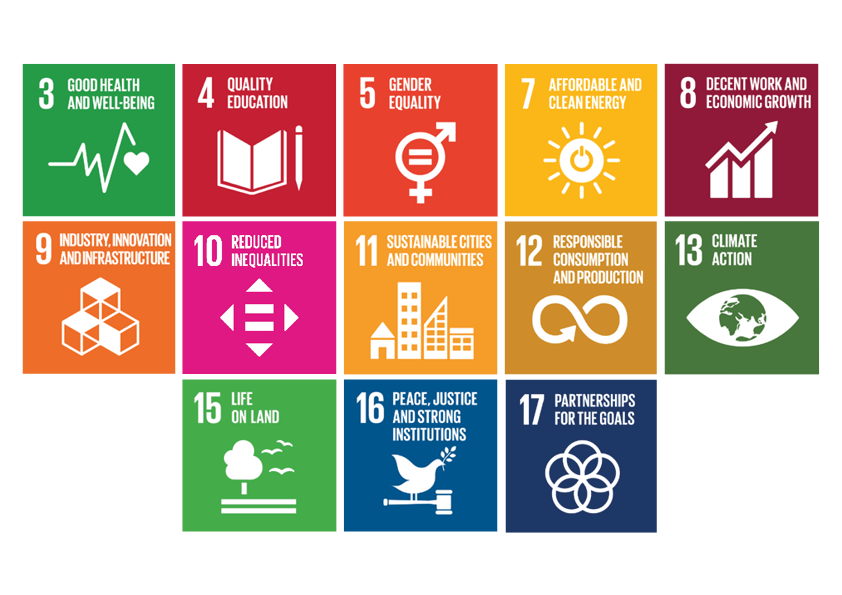 ten-year road map to achieve carbon neutrality in all its operations and owned events by 2030. The strategy addresses global issues that pose a threat to the quality of our lives, including climate change, air pollution and inequality, using the power of sport and athletics to create a better world for communities.
ten-year road map to achieve carbon neutrality in all its operations and owned events by 2030. The strategy addresses global issues that pose a threat to the quality of our lives, including climate change, air pollution and inequality, using the power of sport and athletics to create a better world for communities.
The strategy, which aligns with 13 of the 17 United Nations Sustainable Development Goals, was designed to deliver tangible benefits across environmental, social and economic sustainability, illustrating World Athletics' commitment to embracing sustainability principles and practices within its operations, its Member Federations and the organisation of future World Athletics Series events.
The strategy is divided into six pillars, each of which contain actions and targets for the organisation to pursue: leadership in sustainability, sustainable production and consumption, climate change and carbon, local environment and air quality, global equality and diversity, accessibility and wellbeing.
Find out more.


A key component of the World Athletics Sustainability Strategy is to embed principles of sustainability into the delivery of all the events World Athletics owns or controls, like our World Championship events, and those we license or influence, like the events that make up our one-day meeting series and tours and label road races.
To do that, we’ve developed two tools: a Sustainable Events Management System, offering best practice guidance in 15 key areas of event planning and delivery in 16 languages, and our Athletics for a Better World (ABW) Standard, a certification that evaluates all World Athletics-licensed events based on 55 action areas that address efforts to minimise environmental impact, as well as maximise social and local economic benefits. Tiered with platinum, gold, silver and bronze levels, the ABW Standard is scalable so that any event at any level, from a local parkrun or club track meeting to a World Championships, can reach the highest level of sustainable event achievement.
In 2024, the first year World Athletics implemented the ABW Standard, 48 events reached one of the achievement levels with two achieving platinum.
Cities bidding to host upcoming World Athletics Championship events, for which bids launched from the second half of 2023, are required to commit to a gold or bronze level achievement, making sustainability a contractual deliverable of all future World Athletics championships events.
When fully adopted, the ABW Standard will apply to about 500 in-stadium athletics and mass participation road running events, making it the largest sustainability evaluation system in the sport industry..


The United Nations Sports for Climate Action Framework was launched in Katowice, Poland in 2018 to encourage sport organisations to take collective action to limit global warming to a 1.5C degrees rise, the levels agreed in Paris during the 2015 Climate Change Conference.
Why focus on sport organisations?
The United Nations recognised that the global carbon reductions required to meet the targets agreed in Paris—a net zero emission economy by 2050—cannot be met by governments alone. With a global reach that includes a fan base of billions and a unique power to inspire other people, sport has the power to be a global climate action leader.
Recognising this reach and the impact of its events, World Athletics signed the Framework in April 2021.
The framework has two overarching objectives:
- Achieving a clear trajectory for the global sports community to combat climate change through commitments and partnerships according to verified standards
- Using sports as a unifying tool to create solidarity among global citizens for climate action
Signatories to the framework must pledge to reduce their greenhouse gas emissions 50% by 2030 and reach net zero by 2040.
While these targets can appear daunting, the United Nations invites sports organisations to sign up regardless of their environmental progress and to work collaboratively with other signatories to identify and spotlight solutions. Committing to the framework requires demonstrating ongoing progress, meaning organisations need to set targets, measure their carbon impact and take action to reduce as well as compensate for remaining emissions.
World Athletics urges all of its member federations, event organisers and other stakeholders to learn more about the framework and commit to its principles. World Athletics will provide its member federations with any guidance and assistance needed to ensure that our sport is positively contributing to the framework.



